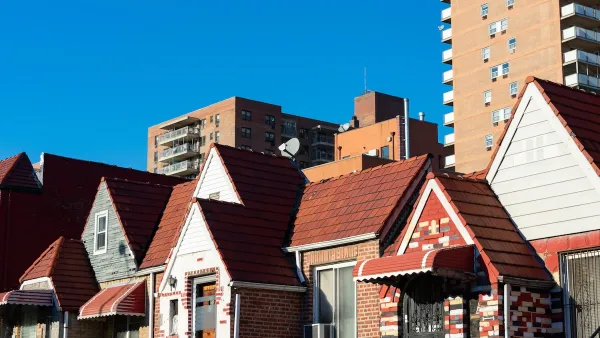Paul Krugman, one of the most influential voices of liberal policy in the United States, has identified a culprit in the U.S. affordability crisis: over-regulation.

Paul Krugman begins an op-ed that identifies land use regulations as the cause of the affordability crisis in urban America by establishing some historic context. "Specifically, urban America reached an inflection point around 15 years ago," writes Krugman, "after decades of decline, central cities began getting richer, more educated, and, yes, whiter. Today our urban cores are providing ever more amenities, but largely to a very affluent minority."
The big question of the op-ed, however, is why? And a second question: "is there any way to spread the benefits of our urban renaissance more widely?"
First, Krugman credits/blames the modern high-wage earner, willing to pay a premium to live closer to work and reduce commute times. " Hence gentrification," writes Krugman. "And this is a process that feeds on itself: as more high earners move into urban centers, these centers begin offering amenities: — restaurants, shopping, entertainment — that make them even more attractive."
Then, Krugman echoes the words of Jason Furman, the chairman of the White House Council of Economic Advisers, who recently began a public relations campaign, of sorts, about the effects of restrictive land use policies on housing supply and housing affordability.
"The good news is that this is an issue over which local governments have a lot of influence. New York City can’t do much if anything about soaring inequality of incomes, but it could do a lot to increase the supply of housing, and thereby ensure that the inward migration of the elite doesn’t drive out everyone else. And its current mayor understands that."
The conclusion of the article promises more on the subject of housing policy and what it will take to deliver on the supply that Krugman desires.
FULL STORY: Inequality and the City

Analysis: Cybertruck Fatality Rate Far Exceeds That of Ford Pinto
The Tesla Cybertruck was recalled seven times last year.

National Parks Layoffs Will Cause Communities to Lose Billions
Thousands of essential park workers were laid off this week, just before the busy spring break season.

Retro-silient?: America’s First “Eco-burb,” The Woodlands Turns 50
A master-planned community north of Houston offers lessons on green infrastructure and resilient design, but falls short of its founder’s lofty affordability and walkability goals.

Test News Post 1
This is a summary

Analysis: Cybertruck Fatality Rate Far Exceeds That of Ford Pinto
The Tesla Cybertruck was recalled seven times last year.

Test News Headline 46
Test for the image on the front page.
Urban Design for Planners 1: Software Tools
This six-course series explores essential urban design concepts using open source software and equips planners with the tools they need to participate fully in the urban design process.
Planning for Universal Design
Learn the tools for implementing Universal Design in planning regulations.
EMC Planning Group, Inc.
Planetizen
Planetizen
Mpact (formerly Rail~Volution)
Great Falls Development Authority, Inc.
HUDs Office of Policy Development and Research
NYU Wagner Graduate School of Public Service




























